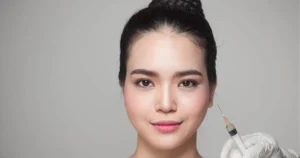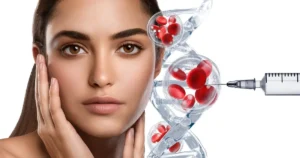Two names frequently dominate the conversation in the quest for youthful, radiant skin: Dysport and Botox. Both are non-surgical treatments designed to reduce the appearance of wrinkles, but how do they stack up against each other? If you’re considering one of these treatments, it’s essential to understand their differences, benefits, and which might be the best fit for your needs. Let’s dive deep into the world of wrinkle smoothers and explore how Dysport compares to Botox.
The Basics: What Are Dysport and Botox?
Dysport and Botox are both neuromodulators.
They contain botulinum toxin type A, a purified substance derived from bacteria. This toxin temporarily paralyzes the muscles it is injected into, preventing them from contracting and thus smoothing out wrinkles and fine lines. While their core function is similar, they are distinct products manufactured by different companies.
- Botox: Produced by Allergan, Botox is perhaps the more well-known of the two. It has been used for cosmetic purposes since the early 2000s and is FDA-approved for treating frown lines, crow’s feet, and forehead lines.
- Dysport: Manufactured by Galderma, Dysport has also been around for quite some time, though it gained FDA approval slightly later than Botox. It’s known for treating moderate to severe frown lines between the eyebrows.
How Do They Work?
Both Dysport and Botox work by blocking the nerve signals to the muscles. This inhibition causes a temporary paralysis of the muscle, which softens and reduces the appearance of wrinkles.
- Mechanism of Action: The botulinum toxin in both treatments targets the proteins responsible for muscle contraction. By disrupting these proteins, the muscles relax, and the overlying skin smooths out.
- Application Areas: While both treatments are primarily used on the face, they can also address other issues. For example, they can reduce excessive sweating (hyperhidrosis), treat migraines, and manage certain muscular disorders.
Differences Between Dysport and Botox
Despite their similarities, several vital differences set Dysport and Botox apart.
Onset and Duration of Results
- Dysport: Many users report that Dysport takes effect faster than Botox. You might start seeing results within 2-3 days, with the full effect visible by day 7.
- Botox: Botox typically takes longer to show results, usually around 3-5 days, with the full effect apparent in 1-2 weeks.
- Duration: The results of both treatments last about 3-4 months. However, some studies suggest Dysport might last slightly longer in some individuals.
Spread and Coverage
- Dysport: Dysport has a larger diffusion area, which spreads more from the injection site. This can be advantageous for treating larger areas but requires a skilled injector to avoid affecting unintended muscles.
- Botox: Botox tends to stay more localized, which can benefit precise applications, such as treating more minor, more defined wrinkles.
Efficacy and Patient Satisfaction
Both Dysport and Botox boast high efficacy and patient satisfaction rates. Clinical studies and user anecdotal evidence generally report significant improvement in wrinkle appearance with both treatments. However, individual preferences vary; some may respond better to one product.
Cost Comparison
Cost can be a significant factor in deciding between Dysport and Botox. The prices of both treatments can vary widely depending on the practitioner, geographic location, and the amount of product needed.
- Dysport: Often, Dysport may be slightly cheaper per unit than Botox. However, because Dysport units are less potent than Botox units, more Dysport may be needed to achieve the same effect.
- Botox: While it may cost more per unit, fewer units may be required, potentially balancing the overall cost.
The Consultation: What to Expect
Before deciding on Dysport or Botox, a consultation with a qualified practitioner is essential. During this session:
- Assessment: The practitioner will assess your facial anatomy, skin type, and the areas you wish to treat.
- Discussion: You’ll discuss your aesthetic goals, any concerns, and medical history.
- Customization: Based on this assessment, the practitioner will recommend the most suitable treatment and dosage for you.
The Procedure: What Happens During Treatment?
The actual procedure for both Dysport and Botox is quick and relatively painless:
- Preparation: The treatment area is cleaned, and a topical anesthetic may be applied to minimize discomfort.
- Injection: The practitioner injects small amounts of the product into the targeted muscles using a fine needle.
- Post-Treatment Care: You might receive instructions to avoid certain activities for a short period to ensure optimal results.
Aftercare and Maintenance
Post-treatment care is crucial for maximizing the benefits and longevity of your results:
- Avoid Touching: Refrain from rubbing or massaging the treated area for at least 24 hours.
- Sta Upright: Keep your head upright for several hours post-treatment to prevent the product from migrating.
- Follow-Up Appointments: Regular follow-ups with your practitioner will help maintain your results and adjust the treatment plan.
Frequently Asked Questions About Dysport and Botox
To further help you decide between Dysport and Botox, here are answers to some of the most frequently asked questions about these treatments:
How Long Does Each Treatment Session Take?
Both Dysport and Botox treatments are quick procedures.
- Dysport: Typically, a Dysport session lasts about 15-30 minutes, depending on the areas being treated and the number of injections needed.
- Botox: Like Dysport, Botox sessions generally take 15-30 minutes.
Because both treatments are efficient, they can be completed quickly during a lunch break, earning them the nickname “lunchtime procedures.”
Is There Any Downtime After Treatment?
One of the most appealing aspects of Dysport and Botox is minimal to no downtime. Most patients can return to their normal activities immediately after their appointment. However, there are a few aftercare instructions to follow:
- Avoid strenuous exercise: For at least 24 hours post-treatment.
- No facials or facial massages: For at least 24 hours, prevent the product from spreading to unintended areas.
- Stay upright: Avoid lying down for 3-4 hours post-treatment.
How Soon Can I See the Results?
- Dysport: Many patients notice initial results within 2-3 days, with optimal results visible at about one week.
- Botox: Results typically appear within 3-5 days, with full results evident at around two weeks.
How Often Will I Need Treatments?
The frequency of treatments depends on individual factors, including how quickly your body metabolizes the product and the areas being treated. On average, treatments are needed every 3-4 months for both Dysport and Botox to maintain optimal results.
Takeaway
At Ocean State Laser & Aesthetics, we offer the latest advanced skincare treatments, including Dysport, the premier choice for smoothing wrinkles and fine lines. Located in the heart of East Greenwich, RI, our clinic combines state-of-the-art technology with personalized care to help you achieve the flawless complexion you deserve. Contact us today to schedule your Dysport consultation and take the first step towards smoother, wrinkle-free skin.




